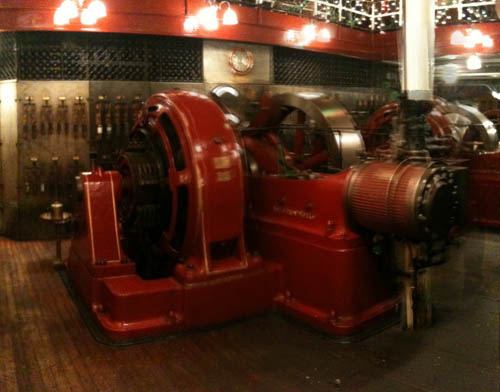On the advice of a friend here in New York, my wife and I went over to the Pratt Institute in Brooklyn on New Year's Eve to watch the school's underground steam infrastructure be transformed, temporarily, into a thunderous musical instrument. Somewhere between subterranean calliope and mutant wave organ, steam-powered explosions of sound threatened to deafen everyone as it turned 2010.
I've finally gotten around to uploading some footage I shot that night; you can watch (a very badly edited) clip, above.
[Image: Pratt's underground steam HQ, stitched together and cropped by iPhone].
According to the Municipal Art Society, Pratt's steam-powered plant "is the oldest privately-owned, continuously operating, power plant of its kind in the country"—and, once a year, it gets turned into a gigantic musical instrument. One of the whistles used has even been repurposed from an old steamship, the S.S. Normandie.
The implication here, that you can attach pieces of musical instruments, and even old ship parts, to your city's existing infrastructure and thus generate massive waves of sound is pretty astonishing; this might be a very site-specific thing, to be sure, and something only Pratt has permission to do to its own steam tunnels, but the mind reels at the possibility that this could be repeated throughout New York. For instance, on any point of the existing steam network as documented last month by Urban Omnibus:
- Every winter, a typically unseen machine becomes visible in the streets of Manhattan: Con Edison’s District Steam System. Seen from the street as steam leaking from manholes, or more safely vented through orange and white stacks, leaking steam hints at an underground energy distribution system that is the largest of its kind in the United States and offers a chance for the public to become more aware of and more involved in how the city works.
The city is a saxophone, your grandfather explains, pointing down through sidewalk steam-grates as haunting whistles begin to sound. We have always lived inside an instrument, he adds, even if not all of us have known.